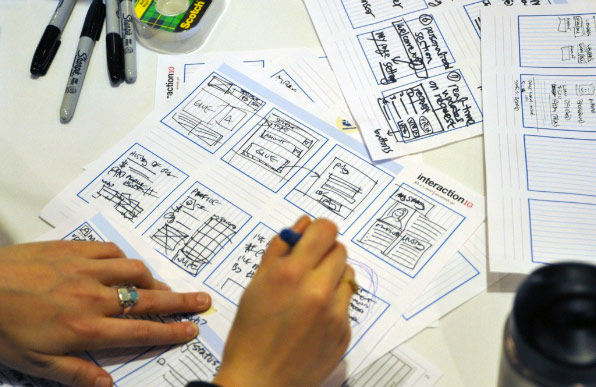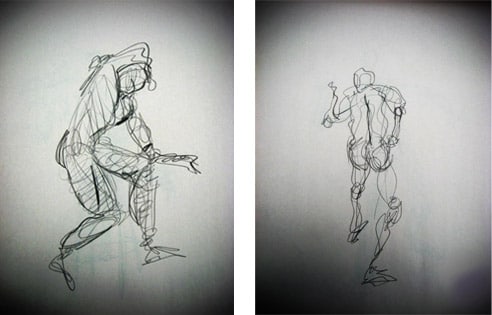I recently read Zaki Warfel’s book Prototyping: A Practitioner’s Guide. It’s an excellent resource for anyone interested in the vital role prototyping plays in the software design process. I was first introduced to Warfel and his book after hearing his talk at Agile 2010. Sketching, or low fidelity (lo-fi) rapid paper prototyping, is one of the methods he outlined in his talk and book.

In his book, Warfel states that sketching on paper is his favorite form of prototyping because it’s collaborative, can be done anywhere, by anyone, with many people, requires no technology and is easy to change. He advocates the importance of rapid drawing (5 drawings in 5 minutes) and team critique. The wisdom of this rapid feedback model struck me immediately. It bears a striking resemblance to a process I learned in my studio art classes.
In drawing classes, in particular figure drawing, it is common practice to work on “gesture drawings” or many drawings in rapid succession, falling anywhere from 30 seconds to 5 minutes. The quickness of it all forced immediate almost unconscious reactions to subject matter. The eye and hand learn to work together unmitigated by overthinking proportions, erasing, or other perfecting measures. In the case of figure drawing, the model changes positions (and is able to hold much more active, interesting positions because it’s only in short bursts).
The result are often compelling drawings in their own right, but they are intended to be learning exercises. Most of them aren’t very good, but as the semester progresses, they get better. One’s intuitive ability to see proportions increases. Critique also plays a role. After a 30 minute burst we would often select our favorite and then critique everyone’s work as a class. Seeing other’s drawings allowed the class to see many different styles of gesture and see new opportunities. The drawings below took 30 seconds each. The first one communicates the model’s strain by using dark lines at points of muscular tension. The second drawing creates the illusion of a running model by the use of foreshortening (the left leg and arm appear smaller to give the illusion of further distance).
The wisdom of rapid drawing in the studio art context crosses over into software development. Both practices are learning focused, efficient, and contain surprising wins (such as elegant interface solutions, or in my case cheap framable art). Atomic uses collaborative rapid paper prototyping — with designers, developers, and business stakeholders — as part of our project discovery process. We’ve found it to be an effective way to understand requirements, reveal design and feature opportunities, and create shared understanding between the product team and clients. This in turn helps with estimation and expectation setting, because we have created a shared vision of the application to be built.


[…] I recently wrote about the similarities between the practice of gesture drawing in fine art and rapid paper prototyping in sof…. As a former student of art now working in software, drawing comparisons between the two is […]
Webpage Design and Development – The Principle Process in the Look and Web Design…
Most employers treat their website as a substance from another world. They do not treat their site as an extension of their real business. Website is a shop or office in cyberspace. Remember, online shop and real business must work together. To achieve…